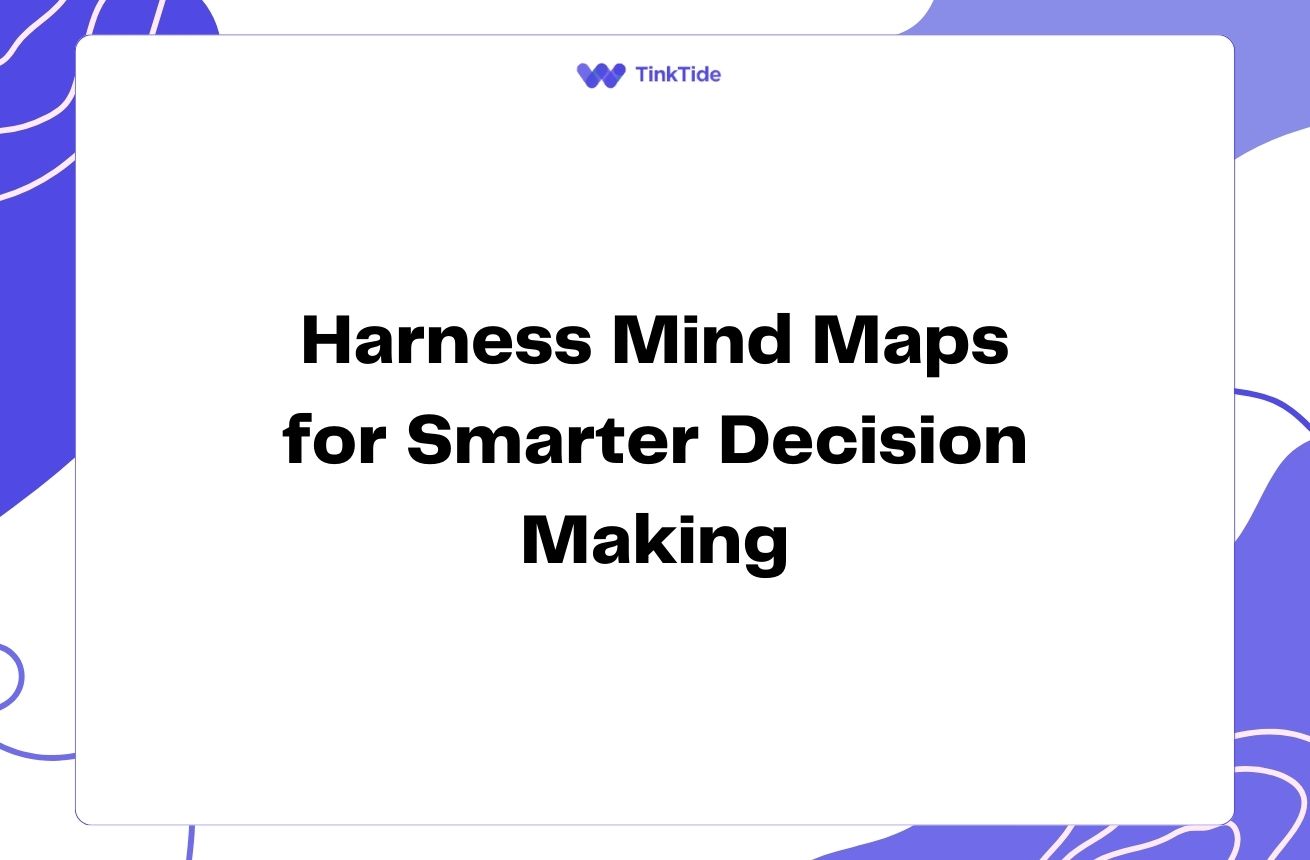Boost Your Strategic Thinking with Mind Mapping
Understanding Strategic Thinking and Mind Mapping
Strategic thinking is the ability to analyze complex situations, identify patterns, and make informed decisions. It's a crucial skill for leaders and professionals in any field. Mind mapping, on the other hand, is a visual thinking tool that helps organize information and ideas in a non-linear, intuitive way.
By combining these two powerful techniques, you can significantly enhance your strategic thinking capabilities. Mind mapping allows you to see the big picture while also focusing on important details, making it an ideal companion to strategic thinking processes.
Research has shown that visual thinking techniques like mind mapping can improve problem-solving skills by up to 32%. A study published in the Journal of Learning and Instruction found that students who used mind maps performed better in critical thinking tasks compared to those who used traditional note-taking methods.
Benefits of Using Mind Maps for Strategic Thinking
Incorporating mind mapping into your strategic thinking process offers numerous advantages:
- Improved clarity and organization of complex ideas
- Enhanced creativity and innovative thinking
- Better retention and recall of information
- Facilitated collaboration and communication
- Increased efficiency in decision-making processes
How Mind Mapping Enhances Strategic Thinking
Mind mapping complements strategic thinking by providing a visual framework for exploring ideas and connections. It allows you to break down complex problems into manageable components while maintaining a holistic view of the situation.
When creating a mind map for strategic thinking, start with your central goal or problem in the middle. Then, branch out with main themes or categories, adding subtopics and details as you go. This process helps you identify relationships between different elements and uncover new insights.
For example, if you're developing a business strategy, your central topic might be 'Market Expansion.' Main branches could include 'Target Demographics,' 'Competitive Analysis,' 'Marketing Channels,' and 'Resource Allocation.' As you add more details to each branch, you'll start to see connections and opportunities that might not have been apparent in a linear thinking process.
Practical Steps to Integrate Mind Mapping into Strategic Thinking
Here's a step-by-step guide to incorporating mind mapping into your strategic thinking process:
- Step 1: Define your central topic or problem
- Step 2: Identify main themes or categories related to the central topic
- Step 3: Add branches for subtopics and details
- Step 4: Use colors, symbols, and images to enhance visual appeal and memory retention
- Step 5: Review and refine your mind map, looking for patterns and connections
- Step 6: Use the insights gained from your mind map to inform your strategic decisions
Tools and Techniques for Mind Mapping
While you can create mind maps using pen and paper, digital tools offer additional features and flexibility. Some popular mind mapping software options include:
- MindMeister: A collaborative online mind mapping tool
- XMind: A comprehensive mind mapping and brainstorming app
- MindMup: A free, open-source mind mapping platform
- GoConqr: An education-focused mind mapping tool
Experiment with different tools to find the one that best suits your needs and workflow. Remember, the key is to focus on the thinking process rather than getting caught up in the tool's features.
Real-World Applications of Mind Mapping in Strategic Thinking
Mind mapping can be applied to various strategic thinking scenarios across different industries. Here are some examples:
1. Product Development: Use mind maps to brainstorm features, analyze market needs, and plan product roadmaps.
2. Risk Assessment: Create mind maps to identify potential risks, their impacts, and mitigation strategies.
3. Project Management: Utilize mind maps to break down complex projects, allocate resources, and track progress.
4. Marketing Strategy: Develop comprehensive marketing plans by mapping out target audiences, channels, and campaign ideas.
Overcoming Challenges in Mind Mapping for Strategic Thinking
While mind mapping is a powerful tool, you might encounter some challenges when using it for strategic thinking:
1. Overwhelm: Start with a simple structure and gradually add details to avoid feeling overwhelmed.
2. Lack of Focus: Keep your central topic clearly defined and refer back to it regularly to maintain focus.
3. Over-complication: Aim for clarity and simplicity in your mind maps. Use concise phrases and clear connections.
Remember, practice makes perfect. The more you use mind mapping for strategic thinking, the more natural and effective it will become.
Address common questions
Here are some frequently asked questions about using mind mapping for strategic thinking:
How long does it take to create an effective mind map for strategic thinking?
The time required varies depending on the complexity of the topic and your familiarity with mind mapping. Initially, it might take 30-60 minutes, but with practice, you can create insightful mind maps in as little as 15-20 minutes.
Can mind mapping replace traditional strategic planning methods?
Mind mapping is a complementary tool rather than a replacement for traditional methods. It enhances the strategic planning process by providing a visual, non-linear approach to organizing and connecting ideas.
How often should I update my strategic mind maps?
It's best to review and update your strategic mind maps regularly, especially when new information becomes available or circumstances change. Aim for at least a quarterly review, but more frequent updates may be necessary in fast-paced environments.
Can mind mapping be used for team-based strategic thinking?
Absolutely! Mind mapping is an excellent tool for collaborative strategic thinking. It facilitates brainstorming, helps visualize different perspectives, and promotes a shared understanding of complex issues among team members.
Are there any industries or situations where mind mapping isn't suitable for strategic thinking?
Mind mapping can be beneficial in most industries and situations. However, it may be less effective for highly quantitative analysis or when dealing with strictly linear processes. In such cases, it can still be used as a supplementary tool alongside other methods.
Provide additional resources
The Mind Map Book
A comprehensive guide to mind mapping by Tony Buzan, the inventor of modern mind mapping
Harvard Business Review: Strategic Thinking Skills
An article on developing strategic thinking skills
Mind Mapping for Strategic Planning
A detailed blog post on using mind maps for strategic planning
TED Talk: The Power of Mind Mapping
An inspiring talk by Tony Buzan on the benefits of mind mapping
Strategic Thinking: 11 Critical Skills Needed
A Forbes article on essential strategic thinking skills
Summarize key takeaways
Incorporating mind mapping into your strategic thinking process can significantly enhance your ability to analyze complex situations, generate innovative ideas, and make informed decisions. By providing a visual framework for organizing and connecting information, mind maps help you see the big picture while also focusing on important details.
Remember that mind mapping is a skill that improves with practice. Start by applying it to simple strategic problems and gradually work your way up to more complex scenarios. As you become more proficient, you'll likely find that mind mapping becomes an indispensable tool in your strategic thinking toolkit.
Take the first step today by creating a mind map for your next strategic challenge. You might be surprised by the insights and connections you uncover, leading to more effective and innovative solutions.
Elevate Your Strategic Thinking with Tinktide
Ready to take your strategic thinking to the next level? Try Tinktide's powerful mind mapping tools and collaboration features.
Start Your Free Trial

